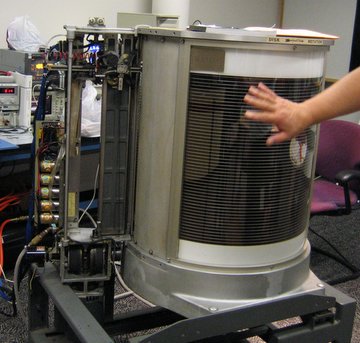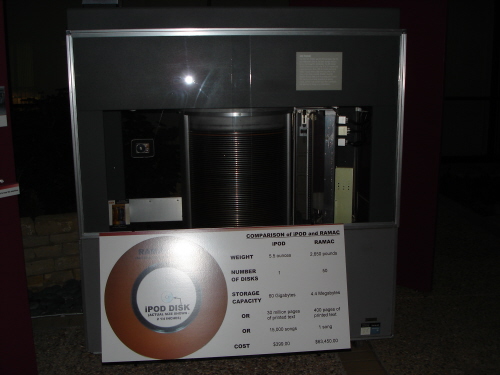|
|
This topic comprises 2 pages: 1 2
|
|
Author
|
Topic: Hard Drives Reach 1 Terrabyte Storage
|
Mark Gulbrandsen
Resident Trollmaster

Posts: 16657
From: Music City
Registered: Jun 99
|
 posted 04-09-2007 08:36 PM
posted 04-09-2007 08:36 PM




I would have to say this is a pretty landmark thing in computer data storage.... its taken just 24 years to get there... the first 3.5" hard drive was marketed in 1983...
Article Link
Just when you got used to hard drives with hundreds of gigabytes (hundreds of billions of bytes) they do it: make one with a terabyte (a trillion bytes).
Yes, you can now get a terabyte hard drive on a desktop PC. Breaking the ice with a Hitachi drive was Dell, with “Area 51” game-oriented machines from its Alienware subsidiary. The 1T option initially costs $500.
In case you’re wondering, as printed text a terabyte would occupy 100 million reams of paper, consuming some 50,000 trees. It is enough to hold 16 days (not hours) of DVD-quality video, or a million pictures, or almost two years worth of continuous music.
You might not have any songs that last for two years, but that’s irrelevant, indicated Henry Baltazar, storage analyst for The 451 Group, a technology analyst firm in San Francisco. “There will be a demand for it, since a lot of people have digital media, like movies, pictures and music,” Baltazar told LiveScience.
“Larger devices will become more commonplace, and we will see the same kind of transition from gigabyte to terabyte drives as we previously saw from megabyte to gigabyte drives—in fact, the move from 500 gigabytes to a terabyte has taken longer than expected.”
The leap from 500G to 1T required a breakthrough in “areal density” (how tight the bytes are packed on the surface of the disk), according to Doug Pickford, a marketing executive at Hitachi Global Storage Technologies. The trick, he explained, was to move to Perpendicular Magnetic Recording (PMR), where each bit is a perpendicular rather than a linear magnetized spot on the disk—as if the bits were standing up rather than lying down.
Currently, areal density is growing at about 35 to 40 percent per year, and the techniques used to create the 1T drive are expandable to make a 5T drive, Pickford said. More work will be needed to surpass the 5T hurdle, but he foresaw no physical limitations until drives reach a capacity of at least 50T.
At that point, they’ll hold about a century of music.
Incidentally, for planning purposes, the next level is the petabyte (a quadrillion bytes); and then the exabyte (one quintillion bytes); and then the zettabyte (one sextillion bytes); and then the yottabyte (one septillion bytes.)
The very first hard drive was the IBM RAMAC that came out in 1956. It had fifty-24 inch disks that held a total of about 5mb of data. It was only available for lease back then for the small fee of $35,000 a year... The photo is of a RAMAC hard drive array thats being restored for display.

| IP: Logged
|
|
|
|
|
|
|
|
|
|
|
|
|
|
|
|
|
|
|
|
|
|
|
|
|
|
|
|
|
|
|
|
All times are Central (GMT -6:00)
|
This topic comprises 2 pages: 1 2
|
Powered by Infopop Corporation
UBB.classicTM
6.3.1.2
The Film-Tech Forums are designed for various members related to the cinema industry to express their opinions, viewpoints and testimonials on various products, services and events based upon speculation, personal knowledge and factual information through use, therefore all views represented here allow no liability upon the publishers of this web site and the owners of said views assume no liability for any ill will resulting from these postings. The posts made here are for educational as well as entertainment purposes and as such anyone viewing this portion of the website must accept these views as statements of the author of that opinion
and agrees to release the authors from any and all liability.
|

 Home
Home
 Products
Products
 Store
Store
 Forum
Forum
 Warehouse
Warehouse
 Contact Us
Contact Us




 Printer-friendly view of this topic
Printer-friendly view of this topic










![[Big Grin]](biggrin.gif) )
)










